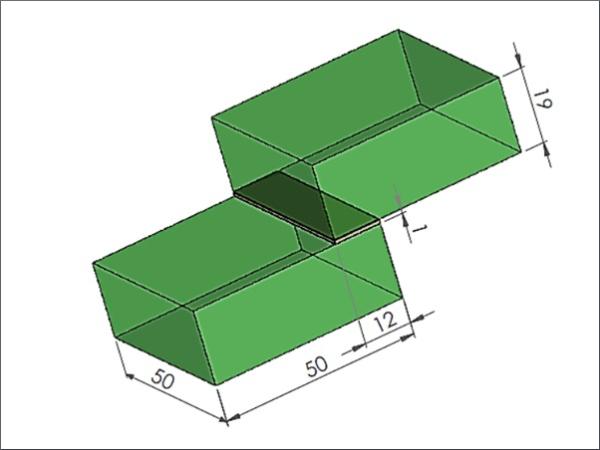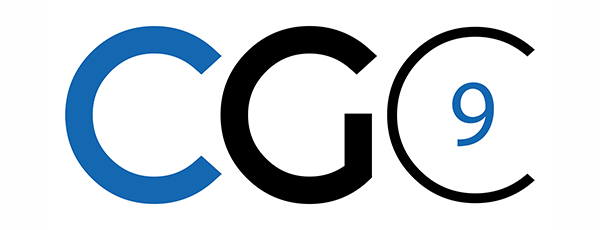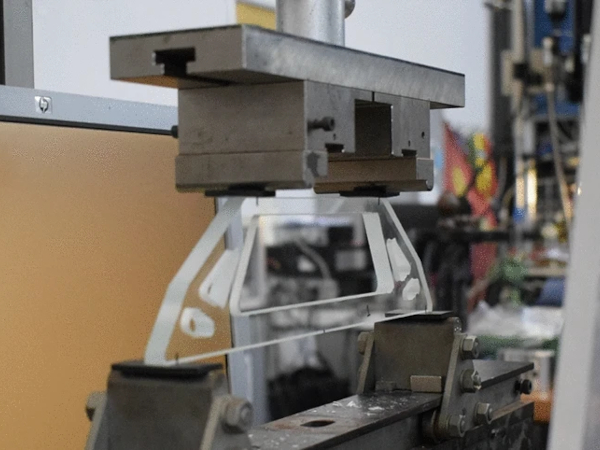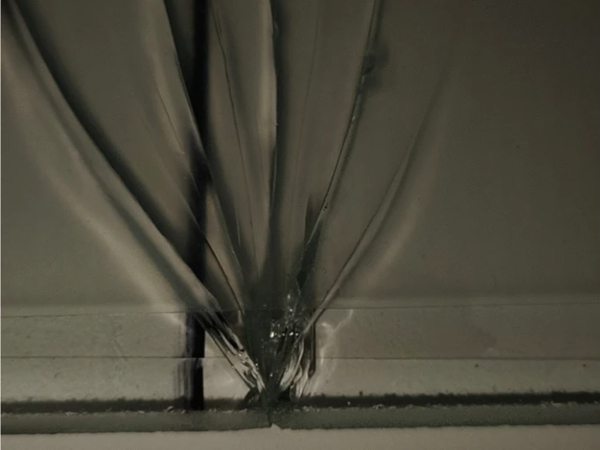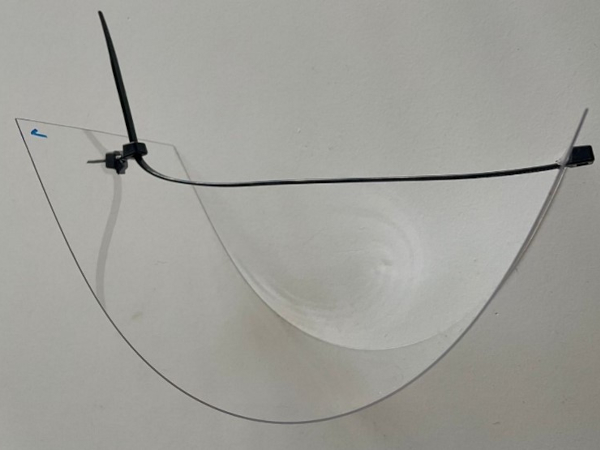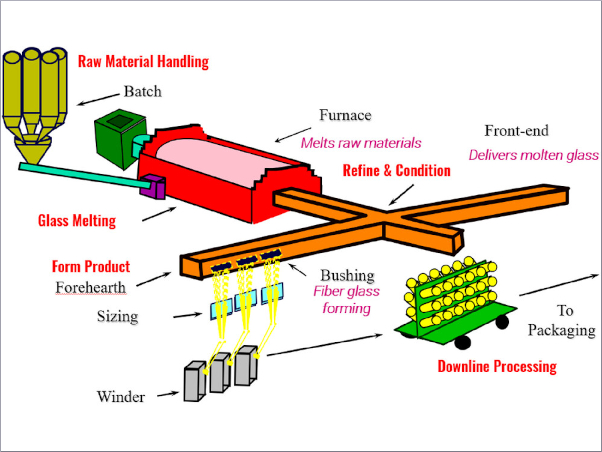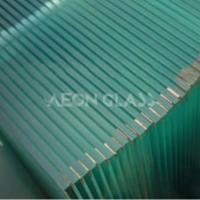Article Information
- Digital Object Identifier (DOI): 10.47982/cgc.9. 497
- Published by Challenging Glass, on behalf of the author(s), at Stichting OpenAccess.
- Published as part of the peer-reviewed Challenging Glass Conference Proceedings, Volume 9, June 2024, 10.47982/cgc.9
- Editors: Christian Louter, Freek Bos & Jan Belis
- This work is licensed under a Creative Commons Attribution 4.0 International (CC BY 4.0) license.
- Copyright © 2024 with the author(s).
Authors:
- Yasmina Boutar a
- Martina Eliášová a
- Petra Tichá b
- Zlata Kelar Tučeková c
- Jakub Kelar c
a Faculty of Civil Engineering, Department of Steel and Timber Structures, Czech Technical University in Prague, Prague, Czech Republic
b Faculty of Civil Engineering, Department of Physics, Czech Technical University in Prague, Prague, Czech Republic
c Faculty of Science, Department of Plasma Physics and Technology, Masaryk University in Brno, Brno, Czech Republic
Abstract
Given the need to create a sustainable future with limited resources and growing environmental concerns, high-strength adhesives offer an alternative and potentially more efficient load-bearing connection to conventional bolted connections in glass structures. However, there is a lack of knowledge on the elevated-temperature effects on the mechanical strength of these connections. Therefore, in this paper, an experimental program was conducted to evaluate and compare the performance of transparent bonded glass joints. A transparent epoxy adhesive Loctite EA 9455 and two glass types (float and low-iron glass) were chosen to conduct experiments. The differences in surface wettability, between air and tin-sides were examined for both glass types.
Results showed that water contact angle measurements on float glass sides were 39.25 % and 3.98 % higher than measurements for low-iron glass on air- and tin-sides respectively. Furthermore, tensile and shear tests were performed on bulk-cured adhesive samples and bonded glass-to-glass block shear specimens respectively, at room temperature (RT), 40 °C, and 80 °C. The results showed that tensile and shear strengths decreased with increasing temperatures. Furthermore, the shear strength was influenced by the surface properties of the glass sides. Indeed, results on air-side likewise tin-side of low-iron glass demonstrated higher resistance for all tested temperatures in comparison with the float glass.
1.Introduction
Connecting the outdoor environment with the indoor living environment is one of the most important advantages of modern construction. It is well known that natural light has a positive impact on health and quality of life. The need for greater transparency, proper orientation of buildings, and the reduction of energy losses of the whole building play an important role in the design of buildings. Today’s architecture places higher demand than ever on the materials and components used. Transparent building elements pose great challenges to architects and especially to engineers. In the 21st century, glass is no longer considered just a material for producing household goods but is becoming a material widely utilized in load-bearing structures. Despite its positive properties, such as transparency, strength, and durability, its fragility must be highlighted and considered. Furthermore, an important issue to consider when designing glass structures is the minimizing of stress concentration in the glass achieved by utilizing low-stiffness elastic materials, especially at the joints between glass and traditional steel fasteners (Dix et al., 2021; Serafinavičius & Kvedaras, 2010).
Meanwhile, the most common kind of glass joints, are bolted glass connections(Lavko & Kvočák, 2020). However, modern architecture focuses on enhancing the visual impact of connections. Thus, research is being performed on the creation of bonded joints that prevent stress intensification (da Silva, 2017) and create the illusion of continuous construction. Even though adhesive bonding has been used in various applications in structural glass construction for many years, only silicones are used for load-bearing bonding, which is governed by ETAG 002 (ETAG002, 2001). Conversely, though, alternative adhesives provide numerous benefits. In addition to high strength, thinner bonded joints with entirely transparent or coloured connections are also achievable (Katsivalis, 2019). Nonetheless, careful consideration must be given to the surface characteristics of the materials, which might influence the interfacial properties of the adhesive joints (Lee, 1991). Commercial float and low-iron glass, the focus of this investigation, are manufactured by the float process, where a ribbon of glass is formed by floating the molten glass from the furnace on a bath of molten tin in a reducing atmosphere(Kumar & Buckett, 2017). Therefore, the two surfaces of the float glass pane (the air- and tin-sides) have dissimilar surface chemistry (Grujicic et al., 2012).
Furthermore, when designing a structural bonded junction, the changing of the adhesives' mechanical properties due to environmental exposure must be considered. In this regard, the influence of high and low temperatures and humidity on the interfaces of glass adhesive joints is a high research priority that has been pursued by various research groups. Weller et al. (Weller et al., 2006, 2012; Weller & Nicklisch, 2010; Weller & Tasche, 2008) focused on the ageing resistance of several UV- and light-curing acrylates, which were used for glass–metal bonds. Meanwhile, research on adhesive joints between glass-to-glass with transparent epoxy adhesives is still scarce, especially regarding their mechanical behavior at different temperatures.
Therefore, to characterize the mechanical behavior of a transparent junction (glass-transparent epoxy-glass) over a large temperature range (RT, 40 °C, and 80 °C), an experimental program was used in the present paper. To accomplish this objective, the effect of the choice of the side from float or low-iron glass (air or tin) for bonding on the strength of the bonded joints was highlighted by correlating the results of glass surface wettability made by contact angle measurements with the output of block shear strength experiments at RT and elevated temperatures.
2. Experimental study
2.1. Materials
Materials evaluated in this study were float and low iron glass (AGC Flat Glass Czech a.s.) and LOCTITE® EA 9455, a two-component transparent epoxy. The low-iron (Planibel Clear Vision® with a content of Fe2O3 less than 200 ppm) is characterized by remarkable clarity and neutral aesthetics as can be seen in Fig.1. Both glass types met (EN 572-1:2012+A1:2016, 2016) and (EN 572-2:2012, 2012). Table 1 shows the physical and mechanical characteristics of the used glasses. Moreover, the technical and mechanical characteristics provided in the adhesive manufacturer's datasheet are listed in Table 2.

Table 1: Physical and mechanical characteristics values of glass (EN 572-1:2012+A1:2016, 2016; EN 572-2:2012, 2012).
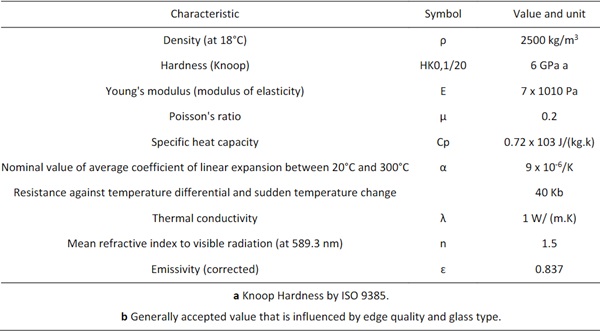
Table 2: Adhesive characteristics (from manufacturer datasheet) (Henkel, 2014)

2.2. Uniaxial tensile tests on bulk specimens
Tests to determine the stress-strain properties of epoxy adhesive under tensile loading were carried out according to the international standards ISO 527–1:2012 (E) and ISO 527–2:2012 (E)(ISO 527-1:2012(E), 2012; ISO 527-2:2012(E), 2012). According to these standards, bulk specimens of type 1B with the shape and dimensions illustrated in Fig. 2 were used. Tensile tests were conducted at RT, 40 °C, and 80 °C using the Shimadzu AGS-X plus 300 kN material testing machine (Shimadzu Co., Ltd.,Kyoto, Japan) equipped with a TCE-N300 heat chamber. A load cell of 1kN was used to perform the experiments. The tensile properties of LOCTITE® EA 9455 adhesive at different temperatures were determined in a previous study (Boutar et al., 2023).

2.3. Glass surface characterization
A UV lamp can identify the tin-side of the float glass pane, as described by ASTM D3891 − 08 (ASTM D3891 − 08 (Reapproved 2019), 2019). Consequently, a tin-side detector Apotek TS580 (Beijing Apotek Scientific Co., Ltd., China) was employed to differentiate between surfaces for float and low-iron glasses. Additionally, to assess the tin- and air-side of both glass types of surfaces, the specimens' wetting characteristics were identified according to ASTM D 7334–08 (ASTM D 7334-08, 2008) by sessile drop methods using the Theta Lite Optical Tensiometer (Biolin Scientific, Finland), capturing the silhouette of a droplet outline (Boutar et al., 2023). Attension software employing the Young-Laplace-fit method (Liu & Cao, 2016) was used for the evaluation of the water contact angle (WCA) from the images. On each side of three glass samples (50 x 50 × 19 mm3) for each glass type, automatically 10 sessile drops of deionised water were evaluated after a deep cleaning using isopropyl alcohol. The standard deviations of these measurements were less than 2°. Drop vibrations were prevented, drop volume had to remain stable (3 μl), and fast measurement (10 s) minimized liquid evaporation.
2.4. Manufacturing and testing process for block shear specimens
Standard shear block bonded glass-to-glass specimens were manufactured to conform to ASTM D 4051–01 (ASTM D 4501 – 01, 2001) with bonded dimensions of 50 mm × 12 mm. The specimen’s layout is given in Fig. 3. The shear strength of bonded glass-to-glass specimens was investigated on both glass sides (air and tin) at RT, 40 °C, and 80 °C. For each glass type, six-block shear specimens were tested for each scenario. Before bonding, the air-and tin-sides of all samples were identified. Afterward, the surfaces to be bonded were cleaned with a lint-free cloth and isopropyl alcohol. A specific mould was designed and fabricated (Boutar et al., 2023) to maintain the alignment of substrates during the curing process and guarantee the desired overlap dimensions and an adhesive thickness of 1 mm. The bonded specimens were cured under standard laboratory conditions (approx. 23 °C and 50% rh) for one week before testing. The same tensile testing machine (Fig. 4, right) was used. Fig. 4 (left) shows the test configuration. The same experiment procedure detailed and described previously (Boutar et al., 2023)was retained for carrying out this experiment's investigation.
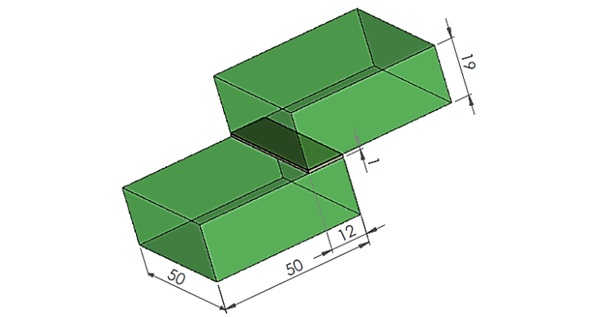
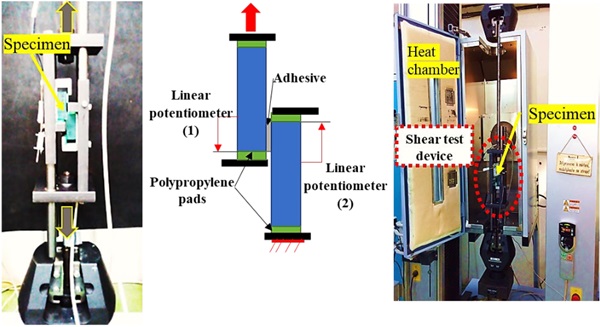
3. Experimental Results and Discussion
3.1. Temperature effect on bulk EA 9455 (tensile test results)
The adhesive's glass transition temperature Tg is an important factor to consider when testing adhesive junctions. Below this temperature, adhesively bonded joints exhibit a low-strain stiff material; above this temperature, the adhesive exhibits more rubber-like behavior. The Tg of EA 9455 adhesive is approximately 36°C, obtained by a dynamical mechanical thermal analysis (DMTA) method (Boutar et al., 2023). Fig.5 shows representative adhesive tensile stress-strain curves as a function of temperature uniaxial tensile tests on bulk specimens. The elastic modulus, ultimate tensile strength, and maximum tensile strain were determined by analysing the stress-strain curve. At RT, the results were consistent with the manufacturer's data sheet information. However, as Table 3 made clear, the data acquired indicated that the EA 9455 adhesive's tensile strength and Young's modulus decreased with rising temperature, along with the adhesive's elongation. Indeed, at 40 °C, the tensile strength decrease was evident as the temperature was very close to the Tg and the epoxy adhesive was in the transition from the glassy state to the rubbery state. On the other hand, tensile strength and strain, as expected drop as the test temperature rises above the Tg at 80°C.

Table 3: The EA 9455 adhesive's mechanical properties.

3.2. Air- and tin-side shear strength glass bonded joints: Correlation wettability and temperatures effect.
In the context of material bonding, wettability plays a crucial role. It allows an understanding of the mechanisms of interaction between the liquid adhesive and the solid substrate. The analysis of the wetting behavior based on the different glass sides for each glass type was performed. Fig.6 shows the WCA measurements for the air- and tin-side for both float and low-iron glass. Results reveal that WCA measurements on float glass sides were 39.25 % and 3.98 % higher than measurements for low-iron glass on air- and tin-sides respectively. It is worth mentioning that the surfaces of both glass types were hydrophilic (WCA <90⁰), which would enable an accurate structural bonding.
Nevertheless, the change in wetting behavior between float and low-iron glass was affecting the shear strength results. The variation in surface OH group density between the two glass surfaces for each glass type could account for these outcomes. OH, groups are thought to significantly influence glass surface properties by serving as effective adsorptive or reactive sites (Suzuki et al., 2017), ultimately enhancing wettability and, consequently, joint strength. As can be seen from Fig.7 an inversely proportional trend is depicted on both sides for the studied materials. The smallest WCA on each side tested allowed the highest shear strength. Therefore, 12.6 MPa average shear strength was obtained for the air-sides of low-iron glass corresponding to 19.22° WCA measurements. These results admitted a 39.68% higher resistance of bonded glass to glass joints than that for bonded float glass. Furthermore, the average shear strength of 12.66 MPa was attained for the tin-side analysis of low-iron glass, which had a minimum WCA of 49.68°. This allowed a 50% greater joint resistance than that of float glass.
Moreover, while the shear strength for float and low iron glass shows a marked contrast, the wetting angles exhibit no statistically significant difference (Fig. 7b.). This contradiction suggests that specific interactions, such as hydrogen bonding (Jiang et al., 2021), may play a crucial role in forming stronger chemical bonds between the adhesive and tin-side glass. However, a comprehensive understanding requires considering multiple factors: surface chemistry, bonding mechanisms, surface roughness, and overall adhesive behavior. Further research and detailed analysis are essential to unravel this intriguing phenomenon.
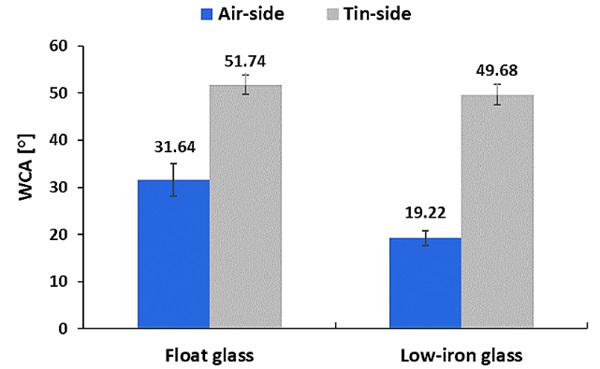
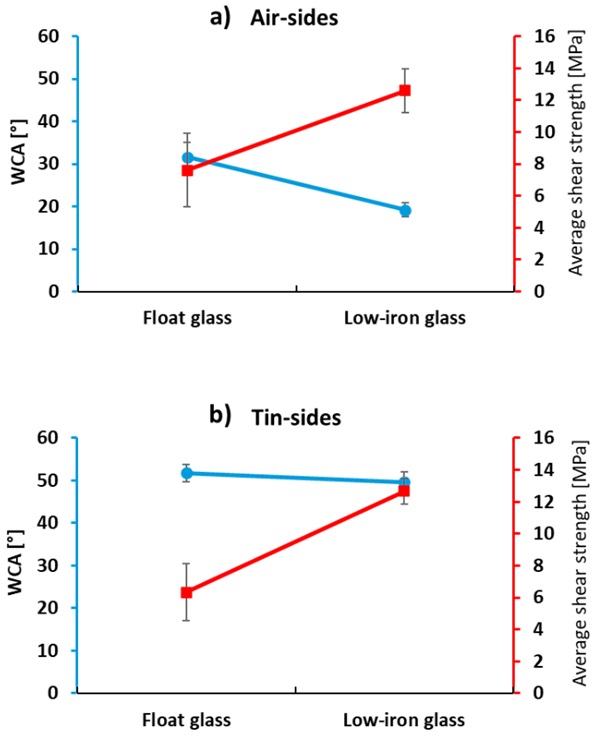
Temperature is one of the main factors affecting the performance of the adhesive, and the mechanical properties of the bonded joint will change in different temperature ranges. The effect of temperature on the properties of the bonding structure is obvious, especially when the temperature is close to the glass transition temperature (Tg) of the material. As shown in Fig. 8, the adhesive strength of glass-bonded block shear specimens gradually dropped as the temperature increased: the higher the temperature, the lower the adhesive strength. For both glass types, the highest adhesive strength appeared at RT, and the lowest adhesive strength appeared at the high temperature of 80 °C. Moreover, in line with the wettability results, at different evaluated temperatures the shear strength of low-iron glass of bonded air- and tin-side specimens was higher than that for bonded float glass samples. Indeed, the adhesive strengths for air-side low-iron bonded joints at RT, 40°C, and 80°C were 39.68%, 57.47%, and 0.7% higher than that for float glass. Likewise, the adhesive strengths for tin-side low-iron bonded joints at RT, 40°C, and 80°C were 50.8%, 78.95%, and 4.36% higher than that for float glass.
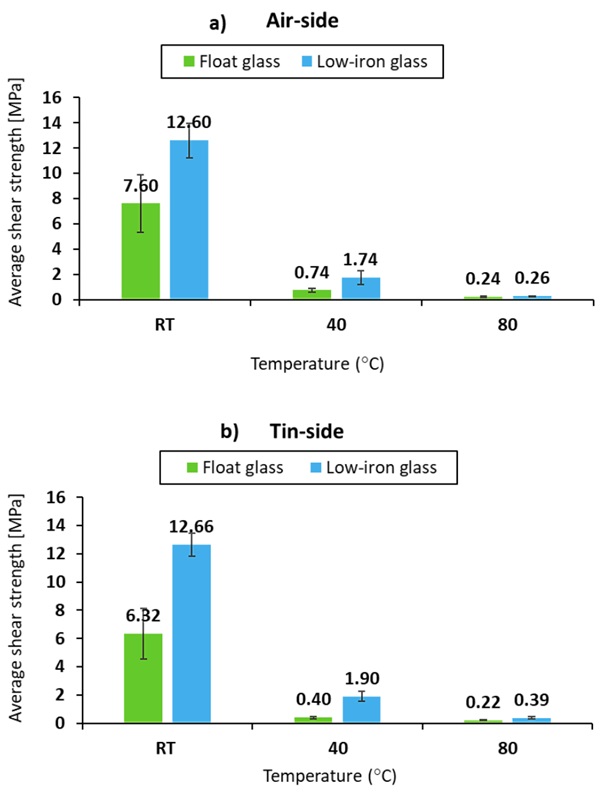
4. Conclusions
In this paper, the influence of bonding air- and tin-side on the joint strength of the adhesive bonded joints of two glass types namely float and low-iron were studied, and the failure resistance under RT, 40 °C and 80 °C was also established. Tensile bulk specimens were used to measure the epoxy adhesive bulk properties, while bonded block shear specimens were used to evaluate the properties of the glass interfaces. The specific research content is summarized as follows:
- The tensile test findings showed that the ultimate tensile stress declined as the temperature increased. At 80°C, when the temperature exceeded the adhesive's Tg value, the adhesive's tensile strength and elongation dropped significantly.
- Following assessing the wettability of the float and low-iron glass's air- and tin-sides, we can conclude that differentiating the two sides is a necessary step before bonding glass. Indeed, results showed that WCA measurements on float glass sides were 39.25 % and 3.98 % higher than measurements for low-iron glass on air- and tin-sides respectively.
- Even though the shear strength of all bonded specimens has fallen with increasing temperature, low-iron air- and tin-side bonded samples had the highest shear strengths in comparison to float glass samples. The changes in the physical and chemical properties of the surface resulting from the differences in surface morphology contribute significantly to the behavior of the bond.
Acknowledgements
This research was supported by the FB – CTU Global Postdoc Fellowship Program and by the Czech Science Foundation, under Grant No. 23-06016S. The authors would like to thank Michal Gschray for his assistance during experimental testing.
References
ASTM D 4501 – 01. (2001). Standard Test Method for Shear Strength of Adhesive Bonds Between Rigid Substrates by the Block-Shear Method.
ASTM D 7334-08. (2008). Standard Practice for Surface Wettability of Coatings, Substrates and Pigments by Advancing Contact Angle Measurement 1. www.astm.org
ASTM D3891 − 08 (Reapproved 2019). (2019). Standard Practice for Preparation of Glass Panels for Testing Paint, Varnish, Lacquer, and Related Products.
Boutar, Y., Eliášová, M., Tichá, P., & Zikmundová, M. (2023). Assessment of the mechanical behavior of bonded glass-to-glass transparent epoxy adhesive joint at elevated temperatures for load-bearing elements. International Journal of Adhesion and Adhesives, 127. https://doi.org/10.1016/j.ijadhadh.2023.103526
BS EN 572-1:2012+A1:2016. (2016). BSI Standards Publication Glass in building-Basic soda-lime silicate glass products Part 1: Definitions and general physical and mechanical properties.
BS EN 572-2:2012. (2012). BSI Standards_ Publication Glass in building-Basic soda lime silicate glass products_ Part 2: Float glass.
da Silva, Lucas. F. M. (2017). Materials Design and Applications (Vol. 65). Springer International Publishing. http://www.springer.com/series/8611
Dix, S., Efferz, L., Sperger, L., Schuler, C., & Feirabend, S. (2021). Analysis of residual stresses at holes near edges in tempered glass. Ce/Papers, 4(6), 145–162. https://doi.org/10.1002/cepa.1628
ETAG002. (2001). Guideline for European Technical Approval for Structural Sealant Glazing Systems, Part1: Supported and unsupported systems ( SSGS ) amended October 2001. European Organisation for Technical Approvals, November 1999.
Grujicic, M., Bell, W. C., Pandurangan, B., Cheeseman, B. A., Patel, P., & Dehmer, P. G. (2012). Effect of the tin- versus air-side plate-glass orientation on the impact response and penetration resistance of a laminated transparent armourstructure. Proceedings of the Institution of Mechanical Engineers, Part L: Journal of Materials: Design and Applications, 226(2), 119–143. https://doi.org/10.1177/1464420711433991
Henkel. (2014). LOCTITE ® EA 9455 _ Technical Data Sheet. www.henkel.com/electronics
ISO 527-1:2012(E). (2012). Plastics— Determination of tensile properties—Part1:General principles. www.iso.org
ISO 527-2:2012(E). (2012). Plastics — Determination of tensile properties —Part 2:Test conditions for moulding and extrusion plastics.
Jiang, Z., Li, Y., Shen, Y., Yang, J., Zhang, Z., You, Y., Lv, Z., & Yao, L. (2021). Robust hydrogel adhesive with dual hydrogen bond networks. Molecules, 26(9). https://doi.org/10.3390/molecules26092688
Katsivalis, I. (2019). Strength analysis and failure prediction of glass adhesive joints [Faculty of Engineering and Physical Sciences]. https://www.researchgate.net/publication/340133526
Kumar, R. V., & Buckett, J. (2017). Float Glass ☆. In Reference Module in Materials Science and Materials Engineering. Elsevier. https://doi.org/10.1016/B978-0- 12-803581-8.01850-6
Lavko, M., & Kvočák, V. (2020). Comparison of Mechanical and Adhesive Joints for Structural Glass - A review. IOP Conference Series: Materials Science and Engineering, 867(1), 012027. https://doi.org/10.1088/1757-899X/867/1/012027
Lee, L.-H. (1991). Fundamentals of Adhesion (L.-H. Lee, Ed.). Plenum Press. https://doi.org/10.1007/978-1- 4899-2073-7
Liu, H., & Cao, G. (2016). Effectiveness of the Young-Laplace equation at nanoscale. Scientific Reports, 6, 1–10. https://doi.org/10.1038/srep23936
Serafinavičius, T., & Kvedaras, A. K. (2010). Review of study on structural glass and structures. 10th International Conference Modern Building Materials, Structures and Techniques, 787–792.
Suzuki, T., Sekine, T., Yamamoto, K., & Fukutani, K. (2017). Change in the surface OH group on soda lime silicate glass and silica glass after heat treatment in nitrogen atmosphere. Journal of Non-Crystalline Solids, 464, 89–91. https://doi.org/10.1016/j.jnoncrysol.2017.03.014
Weller, B., & Nicklisch, F. (2010). Bonding of glass - Latest trends and research. Structures Congress 2010, 2545–2554. https://doi.org/10.1061/41130(369)229
Weller, B., Nicklisch, F., Prautzsch, V., & Vogt, I. (2012). Outline of Testing and Evaluation Program Used in Selection of Adhesives for Transparent Adhesive Joints in All-Glass Load-Bearing Structures. Journal of ASTM International, 9(4), 1–17.
Weller, B., Prautzsch, V., Tasche, S., Vogt, I., & Jansen, I. (2006). Fügen und verbinden mit uv- und lichthärtenden acrylaten. Stahlbau, 75(6), 521–528. https://doi.org/10.1002/stab.200610055
Weller, B., & Tasche, S. (2008). Strukturelles kleben im konstruktiven glasbau. Stahlbau, 77(3 SPEC. ISS.), 28–33. https://doi.org/10.1002/stab.200810029

